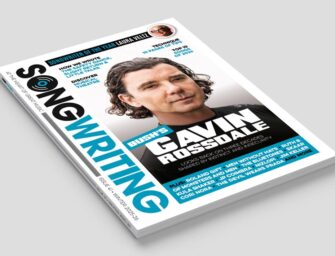Having recently written a book on the controversial Frenchman, journalist Jeremy Allen is perfectly placed to select 12 essential songs
The body of work and louche charm of the late French songwriter Serge Gainsbourg has resonated with acts such a Pulp, Danger Mouse, Iggy Pop and Kylie Minogue. Not confined to success in his home country, the album Histoire De Melody Nelson grows in reputation with each passing year and Bonnie & Clyde, the song he recorded with Brigitte Bardot and was released on two separate albums in 1968, continues to attract cover artists and sample seekers from all genres.

Relax Baby Be Cool book cover
One way to answer that is to listen to his lasting musical legacy, complete with outrage, his liberal approach to lifting sections of existing songs and ungenerous lack of credits for his peers. Here, Allen picks 12 essential tracks for starters…
More ‘Songs In The Key Of’ posts
CE MORTEL ENNUI
Gainsbourg’s first album Du chant à la une!… was somewhat on the gloomy side, though his impish wit and waggish demeanour would surface in some of the lines from Ce Mortel Ennui – “There’s no need to talk when we’re horizontal / And we have nothing to say when we’re vertical”. Musically it’s a delightful melange of cool jazz and melodic French pop with an undercurrent of double bass and vibraphones echoing Gainsbourg’s sardonic vocal lines.
INTOXICATED MAN
The arrangements on the early jazz albums come courtesy of Alain Goraguer, an experienced sideman who’d met Gainsbourg through legendary Left Bank hepcat, Boris Vian. Serge gave Goraguer fewer songwriting credits than he was entitled to, and he borrowed ideas from Vian too, such as Intoxicated Man, based on his mentor’s Je Bois. Gainsbourg swings while he sings about seeing spiders and pink elephants, alcoholic hallucinations that were an early admission that his drinking was already out of control.
PAUVRE LOLA
Gainsbourg Percussions was exploiting the Fourth World fifteen years before Eno and Jon Hassell had attempted to unify primitive/futuristic sound. This being 1964, Serge “forgot” to credit his sources, which led to litigation with Nigerian drummer Babatunde Olatunji over a number of years. There was also a glaring musical interpolation from Mariam Makeba’s Umqokozo used to underpin his song Pauvre Lola which he somehow got away with. He certainly made it his own, but the lack of courtesy shown towards African musicians looks ugly now. Appropriation of repetitive rhythms and looped sounds became central to the culture of hip hop but at that time it was very unusual.
BONNIE & CLYDE
Gainsbourg was full of surprises, but perhaps the biggest surprise of all – from a songwriting perspective – was his utter refusal to write middle eights. With Bonnie & Clyde, there’s barely even a chorus, and yet it’s a great place to start when coming to his oeuvre. Arranger Michel Colombier provides the strings and a haunting vocal loop that sounds like a cuíca drum, Serge purloins Bonnie Parker’s The Story of Bonnie & Clyde poem and turn her words into French, and he’s accompanied by Brigitte Bardot – France’s original “sex kitten”. It’s a coming together of many recognisable elements from the Gainsbourgian universe.
MANON
A lesser-known gem that saw Gainsbourg fully adopt his trademark sprechtsegang for the first time (initially for the soundtrack of Manon 70). He recorded it again for the Jane Birkin/Serge Gainsbourg album, with Arthur Greenslade’s lush, vertiginous strings doing all the work as he utters words of restrained passion. “Je pense avoir perdu la raison,” he mutters, or, “I think I’ve lost my mind”, though he always manages to keep his cool as the song swirls around him like a majestic storm.
REQUIEM POUR UN CON
Built around another loop – a percussive recording of session man Jacky Rault hitting a drum skin with his hands – it had originally been intended for usage as incidental music for the film Le Pacha starring Jean Gabin. Gainsbourg took inspiration from the ricocheting rhythm track and delivered a proto-rap with a titular cuss, while loosely borrowing a line from Antonín Dvořák’s New World Symphony. He appeared in the film performing it as smoke billowed from his lungs, enjoying a moment eyeballing Gabin from behind the booth in the recording studio.

Serge Gainsbourg was full of surprises, but perhaps the biggest surprise of all – from a songwriting perspective – was his utter refusal to write middle eights. Pic: Claude Truong-Ngoc/Wikimedia Commons
AH! MELODY
Nearly every track on Histoire de Melody Nelson is outstanding, so choosing a favourite is impossible, though ‘Ah! Melody’ does the neat trick of perfectly fusing arranger Jean Claude Vannier’s fin-de-siecle strings with a rhythm section played by British session musicians emulating a languorous Black American funk groove (topped off with a Beatlesque, piccolo trumpet break). It manages to convey a great deal in its impossibly short one-minute forty- five-seconds.
JE SUIS VENU TE DIRE QUE JE M’EN VAIS
Written not long before Gainsbourg had his first heart attack, Je suis venu te dire que je m’en vais is an elegiac ballad that seems to anticipate trouble ahead. One of his most beloved songs in his extensive back catalogue, it strongly contrasts with material on the Vu de l’extérieur album from 1973 which is almost entirely fixated on derrières and scatologie.
AUX ARMES ET CÆTERA
Je t’aime… moi non plus was a perfect storm of international controversy but Aux Armes Et Cætera caused even more of a hoo-ha back home. A Jewish son of Russian immigrants reciting La Marseillaise over a reggae soundbed provided by Jamaican musicians (the Revolutionaries featuring Sly and Robbie no less) was too much for many racists, but it also firmly propelled Gainsbourg into the superstar strata at the end of the seventies. He’d been trying to get to that vaunted place for more than two decades.
LE PHYSIQUE ET LE FIGURÉ
A one-off dalliance in electro, this 1981 instrumental anticipates Love On The Beat by three years and is an interesting curio in the Gainsbourg repertoire. Made with his main soundtrack arranger from that time, Jean-Pierre Sabar, it takes a four-on-the-floor beat, ups it to a punishing tempo, and transposes a twangy guitar over the top. It has a similar joie de vivre to anything from McCartney II.
LOVE ON THE BEAT
Gainsbourg embraced sheeny electronic pop in the mid-80s, a move that was hugely popular at the time but has its critics latterly. Not Sebastien Tellier though, who has this to say about Love On The Beat: “It’s the embodiment of the Gainsbourg style… I believe that he wanted to make a song like this from the very beginning of his career: it’s a culmination! It’s such an intimate song it feels like being in bed with him.”
LEMON INCEST
The most controversial song Gainsbourg ever released, given the sublimation of his 13-year-old daughter Charlotte who, in the video, dueted with her half-naked father on a bed. Musically it was another brilliant hybrid, layering Chopin’s Étude Op.10 No.3 over a disco beat with lyrics about “the love we’ll never make” sung between a father and daughter. Somethin’ Stupid it wasn’t.
More ‘Songs In The Key Of’ posts
































Related Articles